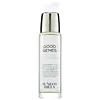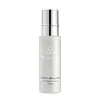What's inside
What's inside
 Key Ingredients
Key Ingredients

 Benefits
Benefits

 Concerns
Concerns

 Ingredients Side-by-side
Ingredients Side-by-side

Water
Skin ConditioningOpuntia Tuna Fruit Extract
Skin ConditioningCypripedium Pubescens Extract
Skin ConditioningOpuntia Vulgaris Leaf Extract
Skin ConditioningAgave Tequilana Leaf Extract
AstringentArnica Montana Flower Extract
MaskingAloe Barbadensis Leaf Extract
EmollientSaccharomyces Cerevisiae Extract
Skin ConditioningLeuconostoc/Radish Root Ferment Filtrate
AntimicrobialCaprylic/Capric Triglyceride
MaskingSqualane
EmollientLactic Acid
BufferingPPG-12/Smdi Copolymer
EmollientPropanediol
SolventButylene Glycol
HumectantStearic Acid
CleansingDimethicone
EmollientCetearyl Alcohol
EmollientPhenyl Trimethicone
Skin ConditioningDisiloxane
Skin ConditioningCeteareth-20
CleansingGlyceryl Stearate
EmollientPEG-100 Stearate
Stearyl Glycyrrhetinate
Skin ConditioningGlycyrrhiza Glabra Root Extract
BleachingCymbopogon Schoenanthus Oil
MaskingPotassium Hydroxide
BufferingPhenoxyethanol
PreservativeXanthan Gum
EmulsifyingCaprylyl Glycol
EmollientChlorphenesin
AntimicrobialSodium Phytate
Water, Opuntia Tuna Fruit Extract, Cypripedium Pubescens Extract, Opuntia Vulgaris Leaf Extract, Agave Tequilana Leaf Extract, Arnica Montana Flower Extract, Aloe Barbadensis Leaf Extract, Saccharomyces Cerevisiae Extract, Leuconostoc/Radish Root Ferment Filtrate, Caprylic/Capric Triglyceride, Squalane, Lactic Acid, PPG-12/Smdi Copolymer, Propanediol, Butylene Glycol, Stearic Acid, Dimethicone, Cetearyl Alcohol, Phenyl Trimethicone, Disiloxane, Ceteareth-20, Glyceryl Stearate, PEG-100 Stearate, Stearyl Glycyrrhetinate, Glycyrrhiza Glabra Root Extract, Cymbopogon Schoenanthus Oil, Potassium Hydroxide, Phenoxyethanol, Xanthan Gum, Caprylyl Glycol, Chlorphenesin, Sodium Phytate
Hamamelis Virginiana Water
AstringentWater
Skin ConditioningGlycerin
HumectantAlcohol
AntimicrobialPropanediol
SolventLactic Acid
BufferingMannitol
HumectantNiacinamide
SmoothingBellis Perennis Flower Extract
Skin ConditioningSodium Citrate
Buffering3-O-Ethyl Ascorbic Acid
Skin ConditioningHieracium Pilosella Extract
MaskingSodium Hydroxide
BufferingGluconolactone
Skin ConditioningXanthan Gum
EmulsifyingSodium Gluconate
Skin ConditioningMaltodextrin
AbsorbentLavandula Angustifolia Flower Water
Skin ConditioningPalmaria Palmata Extract
Skin ProtectingSodium Benzoate
MaskingPhenylethyl Resorcinol
AntioxidantCarnitine
CleansingCitrus Grandis Fruit Water
MaskingCitric Acid
BufferingDiglucosyl Gallic Acid
Camellia Oleifera Leaf Extract
AstringentCamellia Sinensis Leaf Extract
AntimicrobialDextrin
AbsorbentFerulic Acid
AntimicrobialWaltheria Indica Leaf Extract
Skin ConditioningCalcium Gluconate
HumectantGlycyrrhiza Glabra Root Extract
BleachingSodium Dehydroacetate
PreservativeLeuconostoc/Radish Root Ferment Filtrate
AntimicrobialPotassium Sorbate
PreservativeSilica
AbrasiveHamamelis Virginiana Water, Water, Glycerin, Alcohol, Propanediol, Lactic Acid, Mannitol, Niacinamide, Bellis Perennis Flower Extract, Sodium Citrate, 3-O-Ethyl Ascorbic Acid, Hieracium Pilosella Extract, Sodium Hydroxide, Gluconolactone, Xanthan Gum, Sodium Gluconate, Maltodextrin, Lavandula Angustifolia Flower Water, Palmaria Palmata Extract, Sodium Benzoate, Phenylethyl Resorcinol, Carnitine, Citrus Grandis Fruit Water, Citric Acid, Diglucosyl Gallic Acid, Camellia Oleifera Leaf Extract, Camellia Sinensis Leaf Extract, Dextrin, Ferulic Acid, Waltheria Indica Leaf Extract, Calcium Gluconate, Glycyrrhiza Glabra Root Extract, Sodium Dehydroacetate, Leuconostoc/Radish Root Ferment Filtrate, Potassium Sorbate, Silica
 Reviews
Reviews

Ingredients Explained
These ingredients are found in both products.
Ingredients higher up in an ingredient list are typically present in a larger amount.
Glycyrrhiza Glabra Root Extract is an extract of the roots of Licorice. It has been found to have several benefits such as skin hydrating, conditioning, and soothing.
One component, glabridin, has extra potent antioxidant and soothing properties. It has also been found to block pigmentation from UVB rays in guinea pigs.
Licorice Root also contains a flavonoid. Flavonoids are a natural substance from in plants. Flavonoids also have antioxidant properties.
Another component, glycyrrhizin, has been found to have anti-inflammatory and antimicrobial benefits. This may make licorice root extract effective at treating acne. However, more research is needed to support this.
Liquiritin is one of the flavone compounds found in licorice. It has been found to help lighten skin by preventing tyrosinase from reacting with tyrosine. When the two react, protein is converted to melanin. Melanin is the substance in your body that gives your features pigmentation.
Learn more about Glycyrrhiza Glabra Root ExtractLactic Acid is another well-loved alpha hydroxy acid (AHA). It is gentler than glycolic acid but still highly effective.
Its main role is to exfoliate the surface of the skin by loosening the “glue” that holds dead skin cells together. Shedding those old cells leads to smoother, softer, and more even-toned skin.
Because lactic acid molecules are larger than glycolic acid, they don’t penetrate as deeply. This means they’re less likely to sting or irritate, making it a great choice for beginners or those with sensitive skin.
Like glycolic acid, it can:
Lactic acid also acts as a humectant (like hyaluronic acid). It can draw water into the skin to improve hydration and also plays a role in the skin's natural moisturizing factor (NMF) in the form of sodium lactate.
Studies show it can boost ceramide production to strengthen the skin barrier and even help balance the skin’s microbiome.
To get results, choose products with a pH between 3-4.
Lower strengths (5-12%) focus on surface exfoliation; higher strengths (12% and up) can reach deeper in the dermis (deeper, supportive layer) to improve skin texture and firmness over time.
Though it was originally derived from milk, most modern lactic acid used in skincare is vegan. It is made through non-dairy fermentation to create a bio-identical and stable form suitable for all formulations.
When lactic acid shows up near the end of an ingredient list, it usually means the brand added just a tiny amount to adjust the product’s pH.
Legend has it that Cleopatra used to bathe in sour milk to help reduce wrinkles.
Lactic acid is truly a gentle multitasker: it exfoliates, hydrates, strengthens, and brightens. It's a great ingredient for giving your skin a smooth, glowing, and healthy look without the harshness of stronger acids.
Read more about some other popular AHA's here:
Learn more about Lactic AcidLeuconostoc/Radish Root Ferment Filtrate is a natural preservative. It comes from fermenting radish roots with a bacteria called leuconostoc.
Leuconostoc comes from lactic acid.
This ingredient has antimicrobial properties and helps prevent the growth of bacteria in a product.
Leuconostoc is used to make the traditional Korean side-dish, kimchi. It is also used to make sourdough bread (both incredibly yummy foods).
Learn more about Leuconostoc/Radish Root Ferment FiltratePropanediol is an all-star ingredient. It softens, hydrates, and smooths the skin.
It’s often used to:
Propanediol is not likely to cause sensitivity and considered safe to use. It is derived from corn or petroleum with a clear color and no scent.
Learn more about PropanediolWater. It's the most common cosmetic ingredient of all. You'll usually see it at the top of ingredient lists, meaning that it makes up the largest part of the product.
So why is it so popular? Water most often acts as a solvent - this means that it helps dissolve other ingredients into the formulation.
You'll also recognize water as that liquid we all need to stay alive. If you see this, drink a glass of water. Stay hydrated!
Learn more about WaterXanthan gum is used as a stabilizer and thickener within cosmetic products. It helps give products a sticky, thick feeling - preventing them from being too runny.
On the technical side of things, xanthan gum is a polysaccharide - a combination consisting of multiple sugar molecules bonded together.
Xanthan gum is a pretty common and great ingredient. It is a natural, non-toxic, non-irritating ingredient that is also commonly used in food products.
Learn more about Xanthan Gum